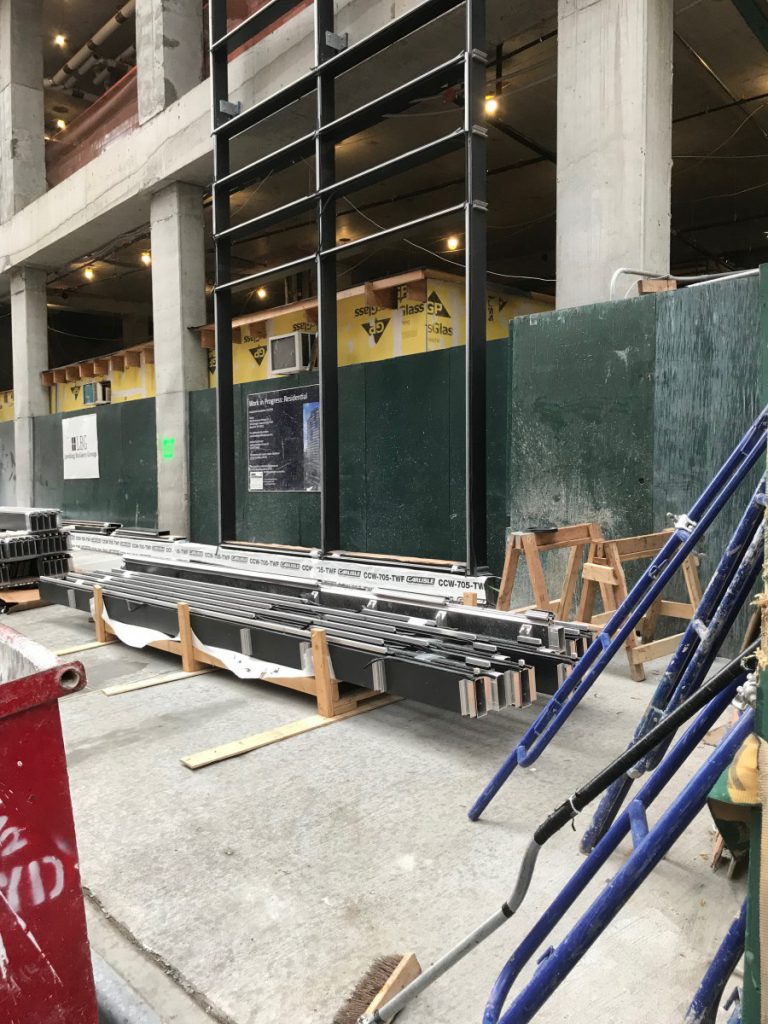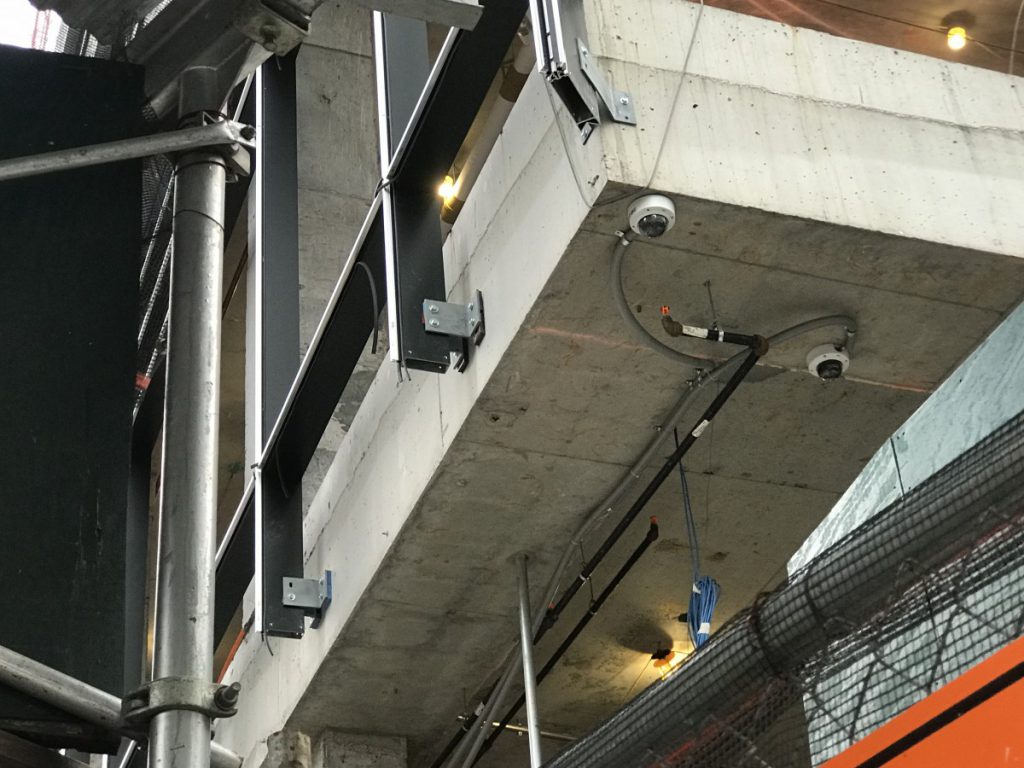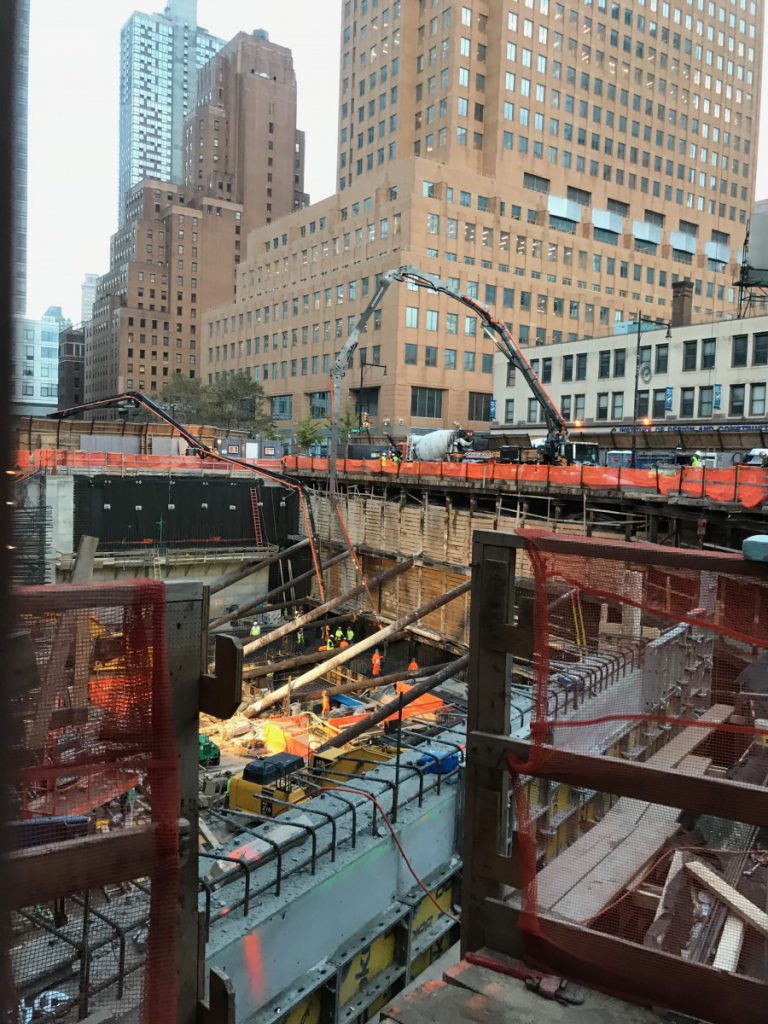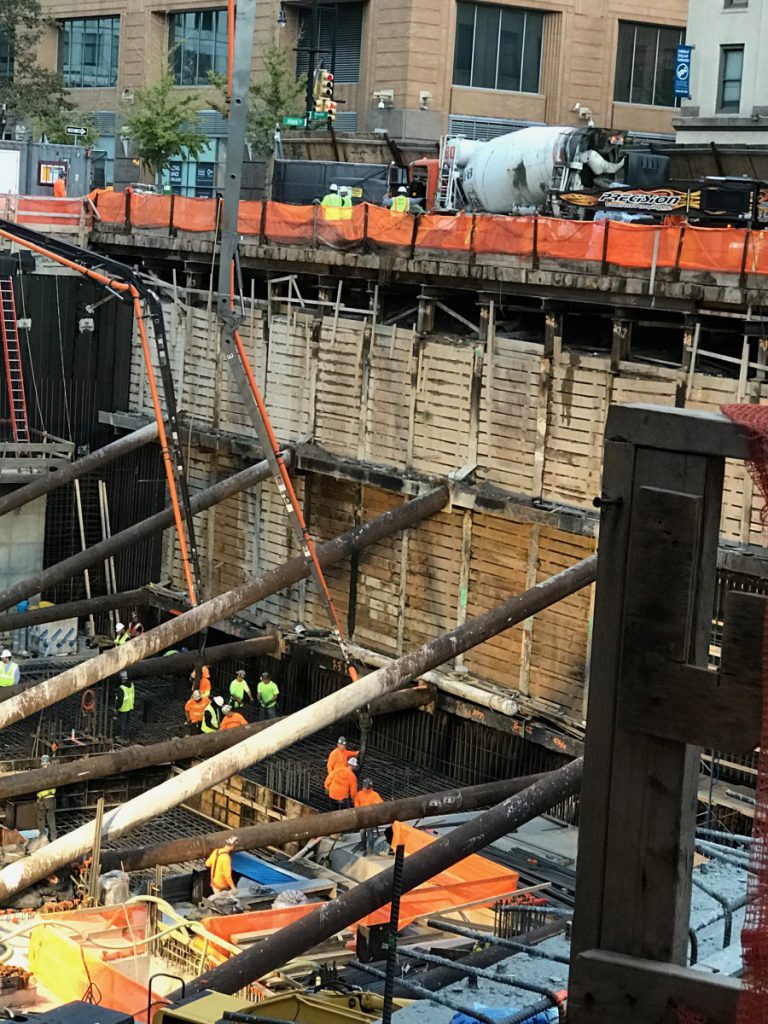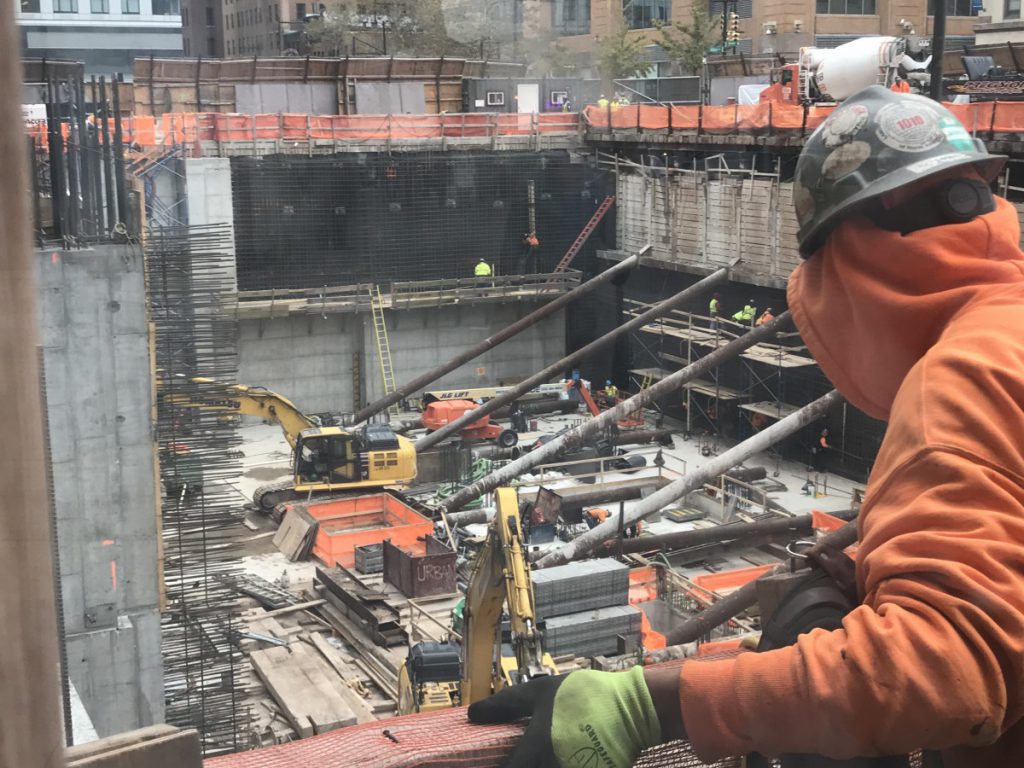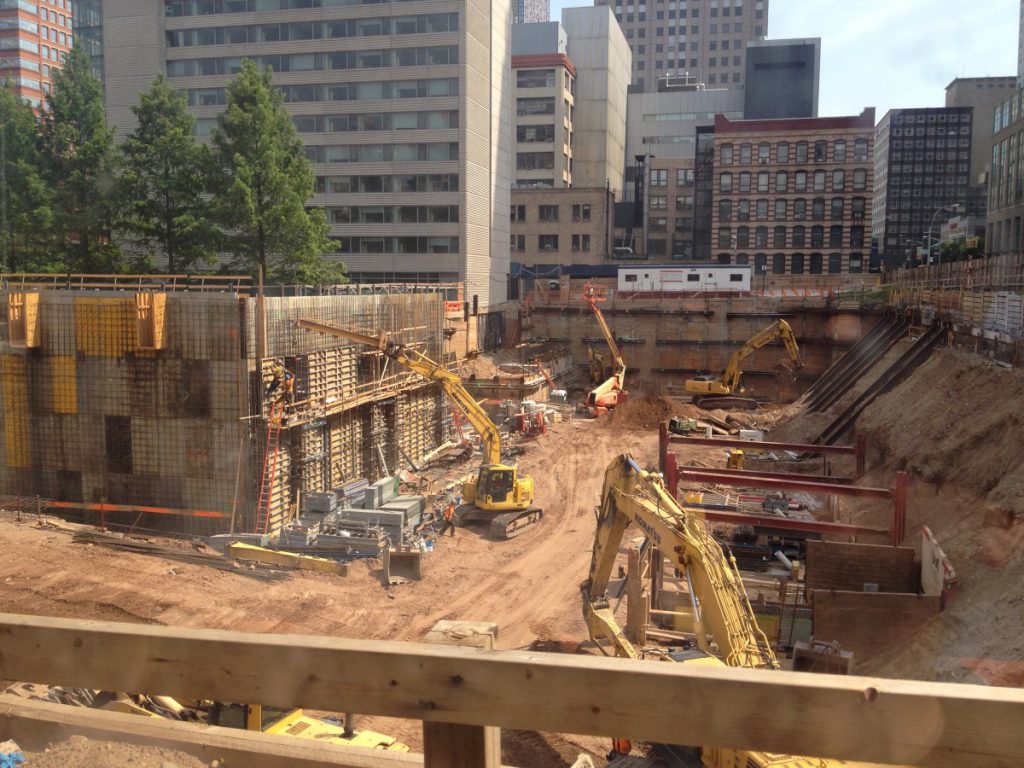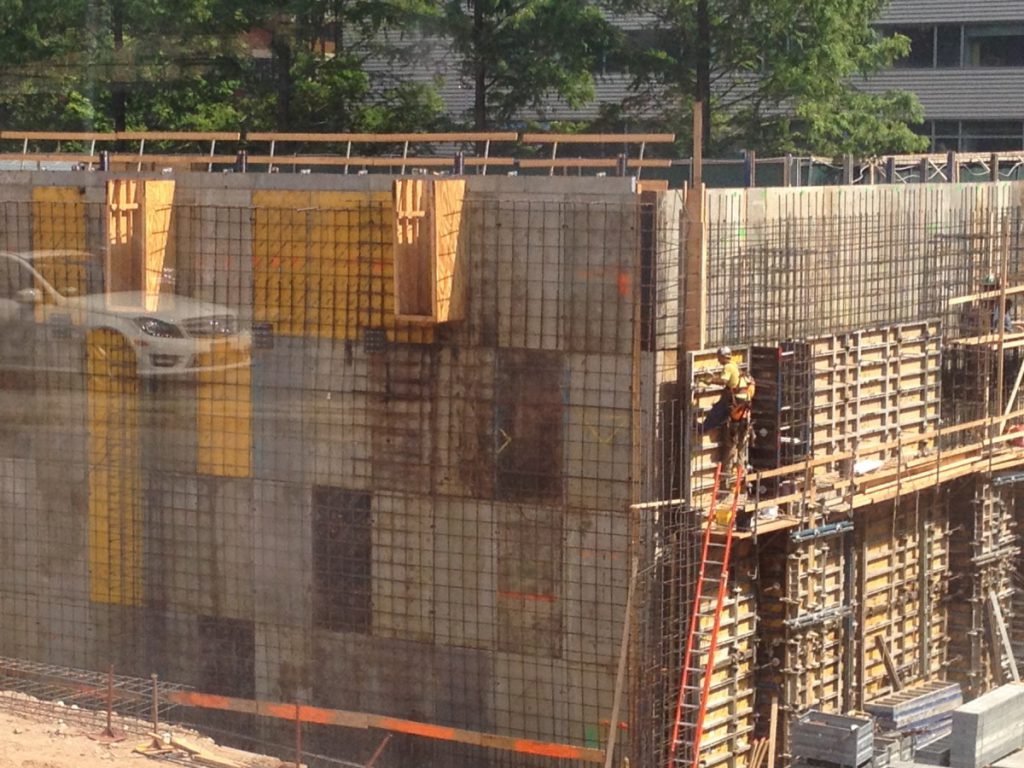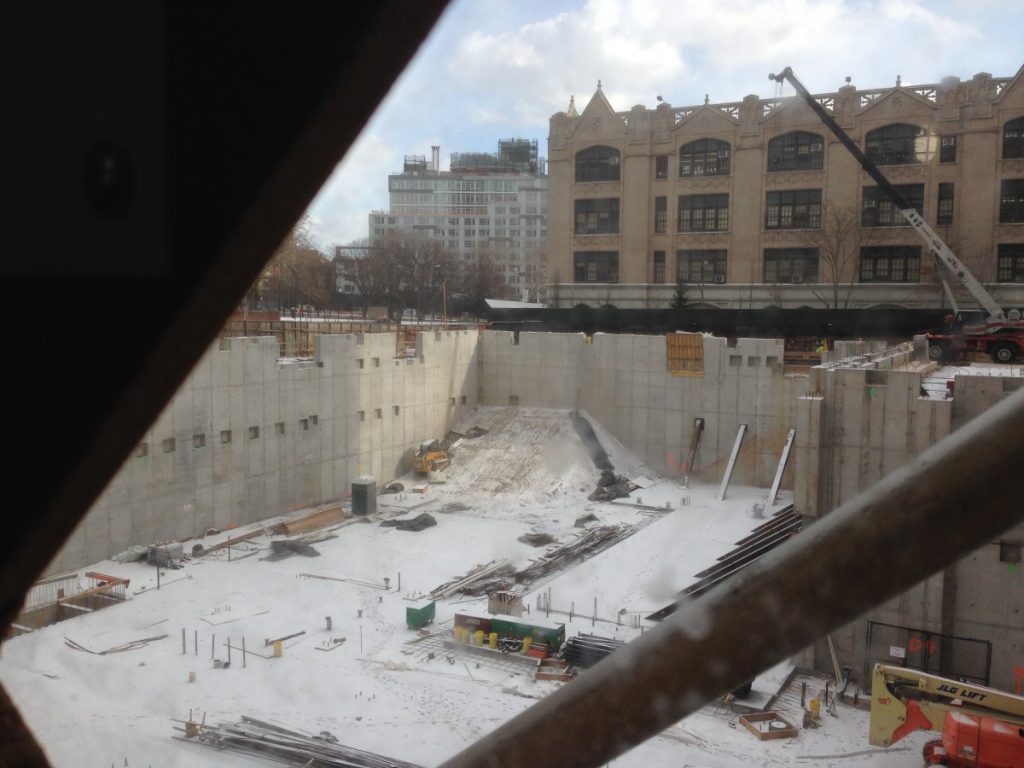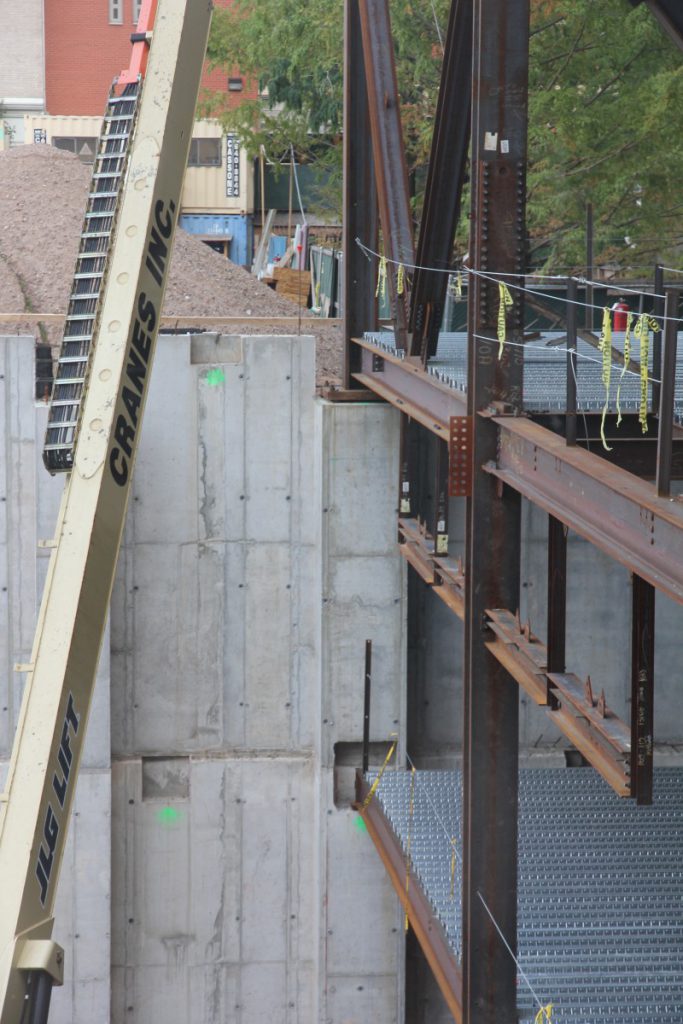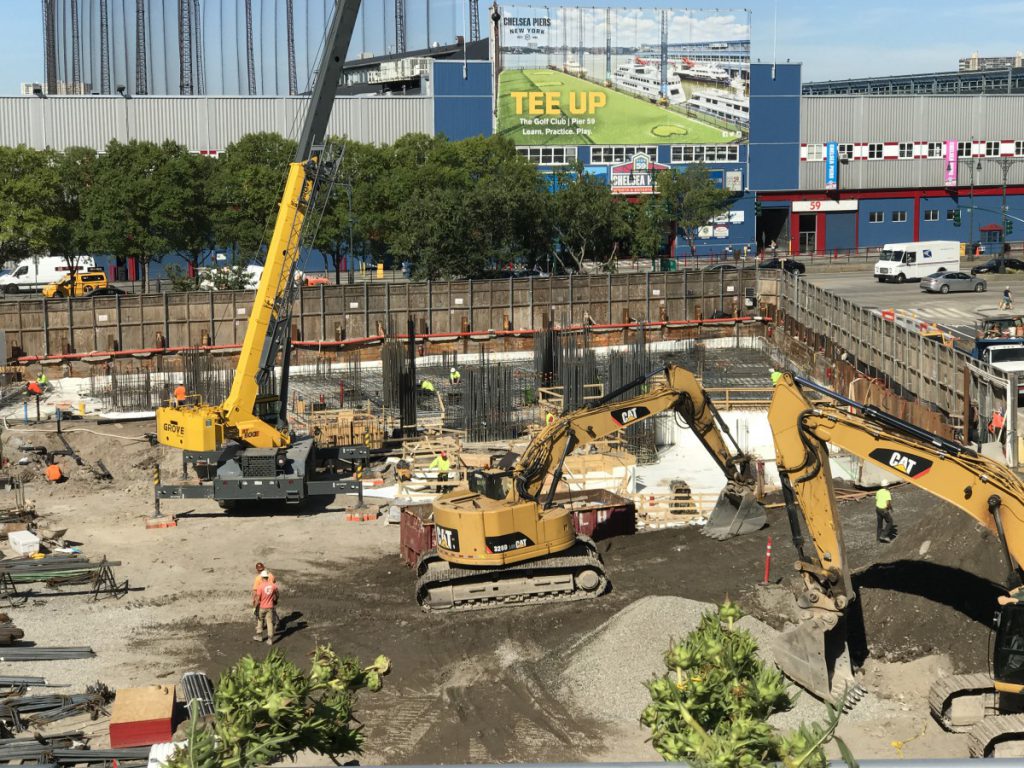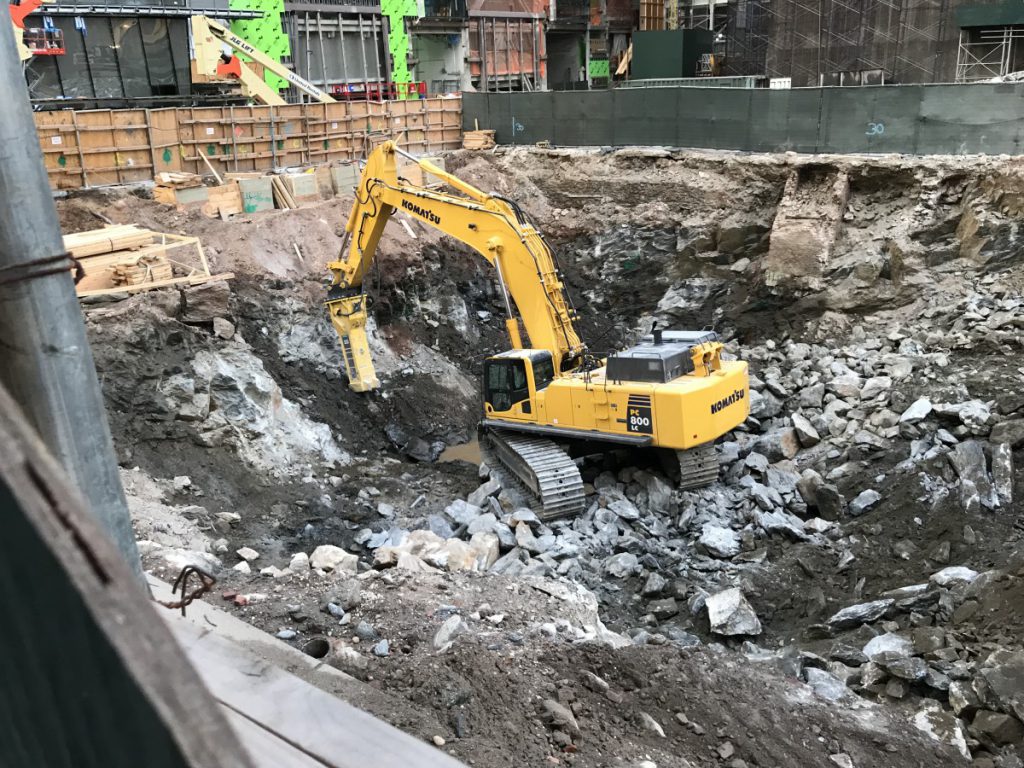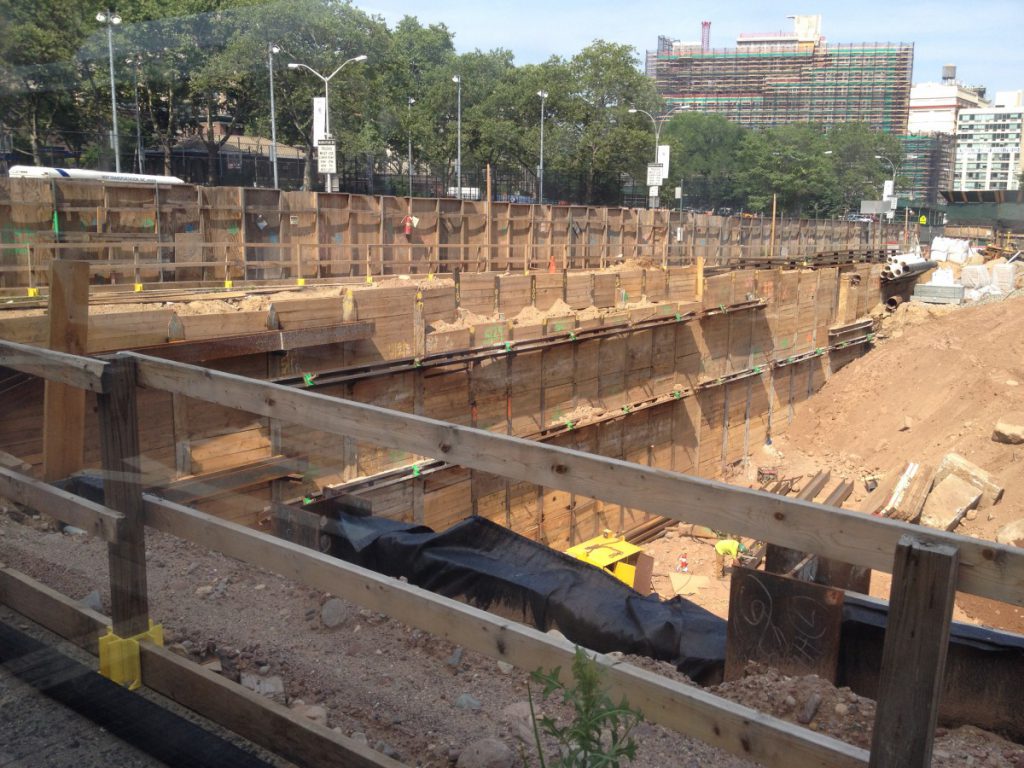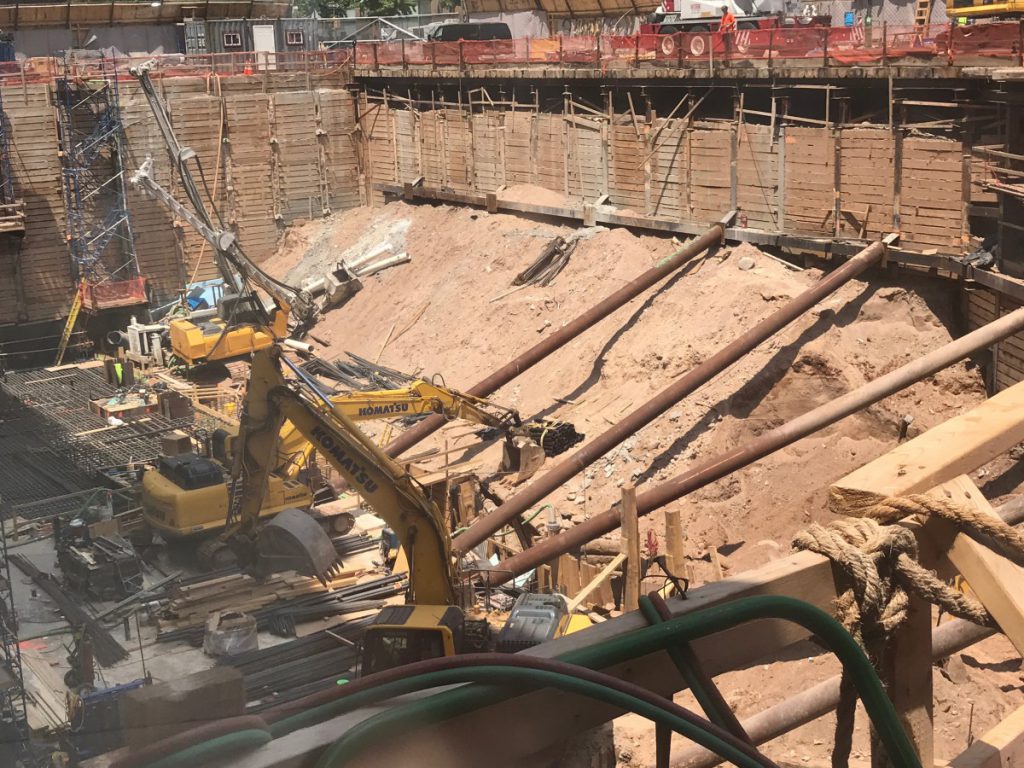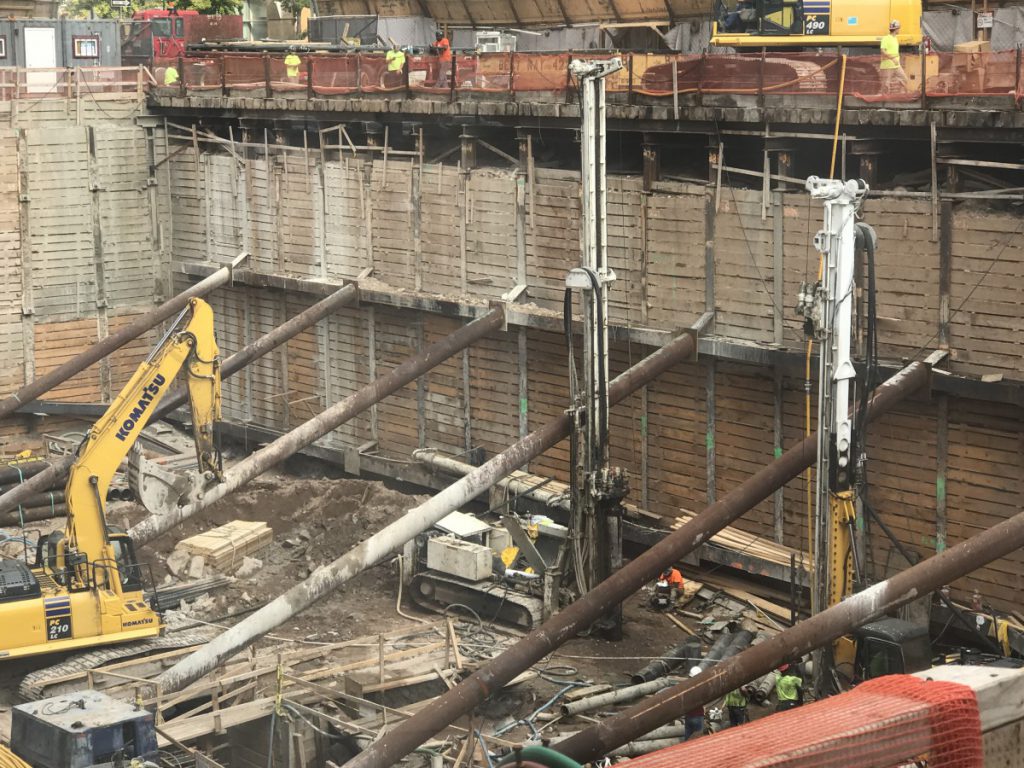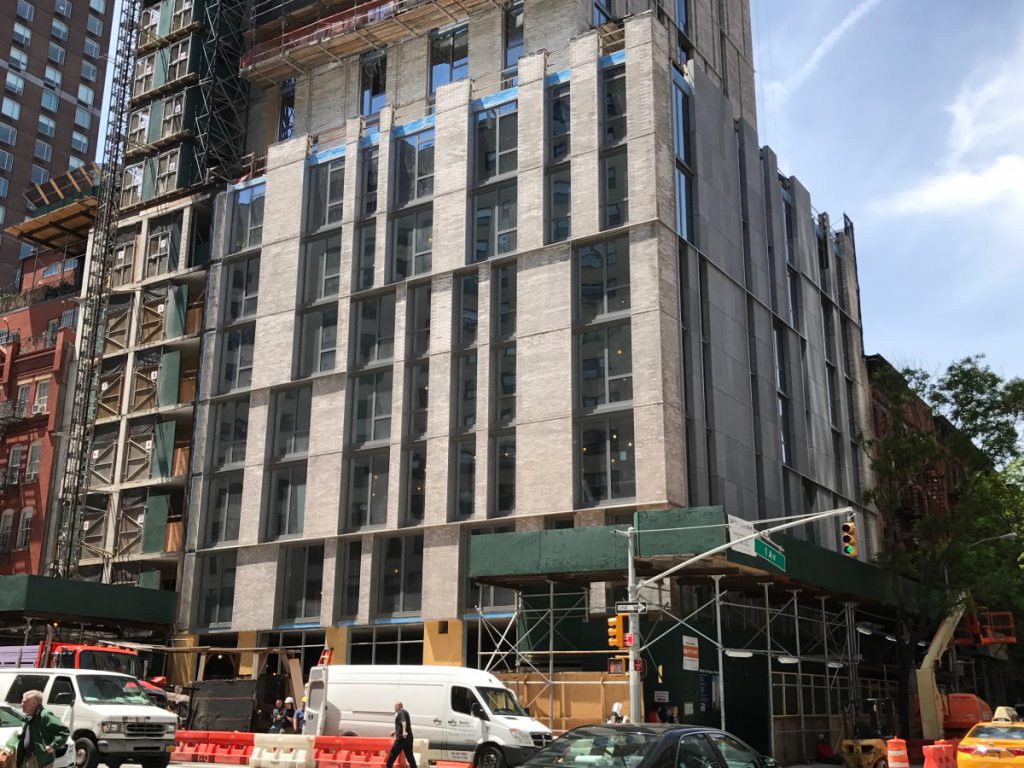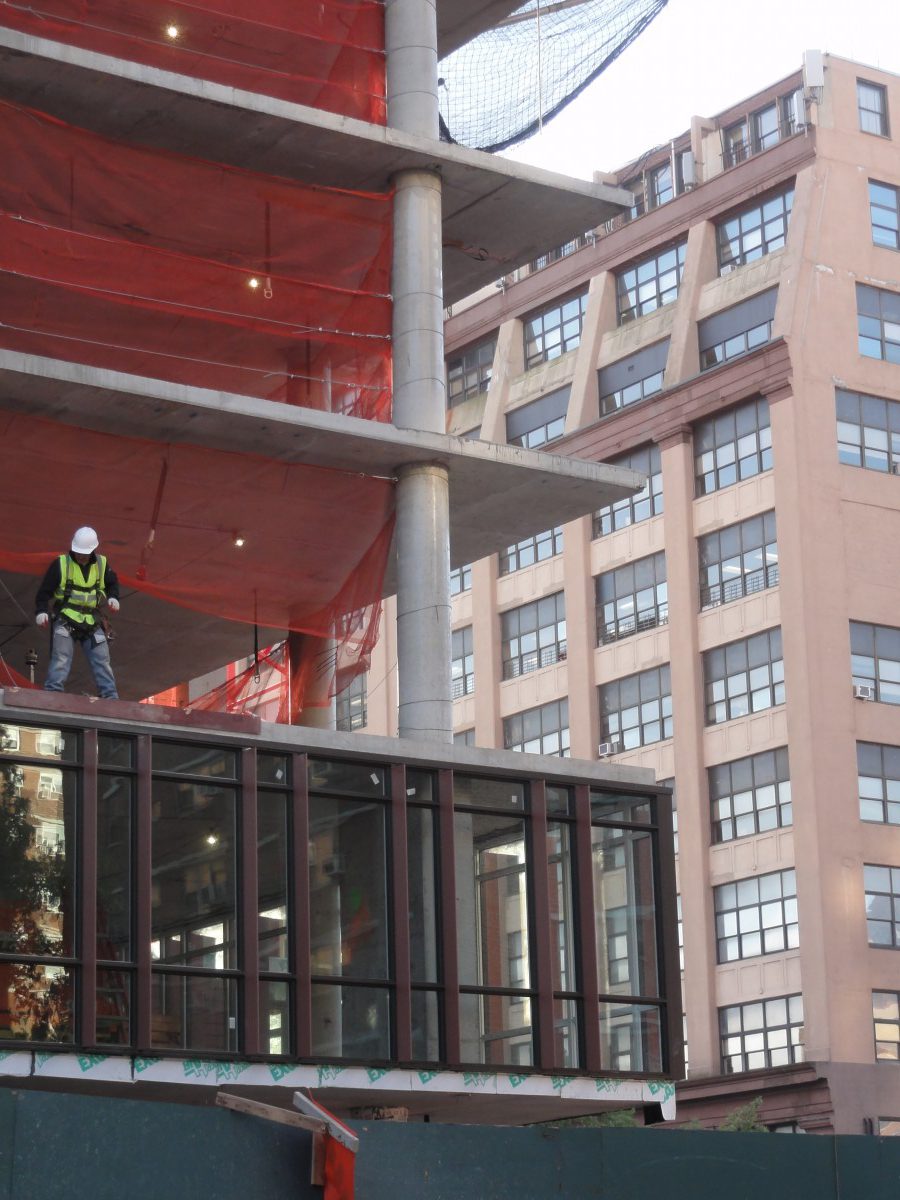Curtainwall Installation: Another Stick System
Here is another stick system installation around 30th and 6th Ave in Manhattan. We can see the thermal break and interior gaskets exposed on the aluminum mullions, anticipating the installation of the insulated glass units and the pressure plate and cover. Steel angles anchor the mullions to the concrete spandrel beam. Shims are visible between the steel angle and the concrete beam.
The exterior wall above for the tower appears to be a window wall, likely installed as a unit system. The curtain wall system at the base spans from the sidewalk to the ceiling of the second floor.
Stick System Curtain Wall Installation
The clear trend for curtain wall installations in New York is a unit approach, where mullions are joined in the factory to the insulated glass units with joints that allow each curtain wall unit to join to the previously installed units to the side and below, with the exterior finish of the mullions integral to the preassembled unit.
Less common today is the previously standard method of installing the grid of mullions first and then installing the insulated glass units, as shown in this new building going up on the East Side. The decision to revert to the older method here may be driven by the exterior finishing of the curtain wall joints, yet to be executed at this stage.
The panels to the left in the above image appear to be terra cotta, which may suggest a rain screen system for that portion of the envelope.
Foundation Construction
Excavation and Shoring
Elegant Structure
Structure is central to architecture, but too often structure is relegated to a mere perfunctory role when it is entombed and no longer apparent. Construction sites remind us of the power of structural form and its timeless potential to provoke aesthetic engagement using nothing more than material and the awareness of weight.
This aesthetic power of structure often arises when atypical conditions are necessary, leading to nuanced structural configurations. In the case of the building illustrated below, on the Upper East Side, the resolution of the concrete frame where it cantilevers over the adjacent building generates a nuanced quality, with the width of the piers reducing at the levels where the diagonal piers shift the load from the cantilever to the primary mass of the structure. Thin structure below wider structure plays on our sense of weight. The thin piers delicately hover over the neighboring building, giving a visual accent to the adjacency. The change of structural thickness endows the form with these qualities. Without the change, the structure would remain in the realm of functional and utilitarian, without any stimulus to make an aesthetic observation. This is the tectonic potential of structural form.
Unusual Details
A concrete frame structure is going up on the East Side with an unusual detail: reinforcement bar projects from the concrete piers horizontally. This could be a unique method of anchoring the exterior skin to the building. Some of the rebar appears to be dangerously close to the pier surface, with inadequate cover. Moisture penetration and freeze thaw will cause serious problems if the skin is not sealed carefully. Will keep an eye on this site to see how the project develops. 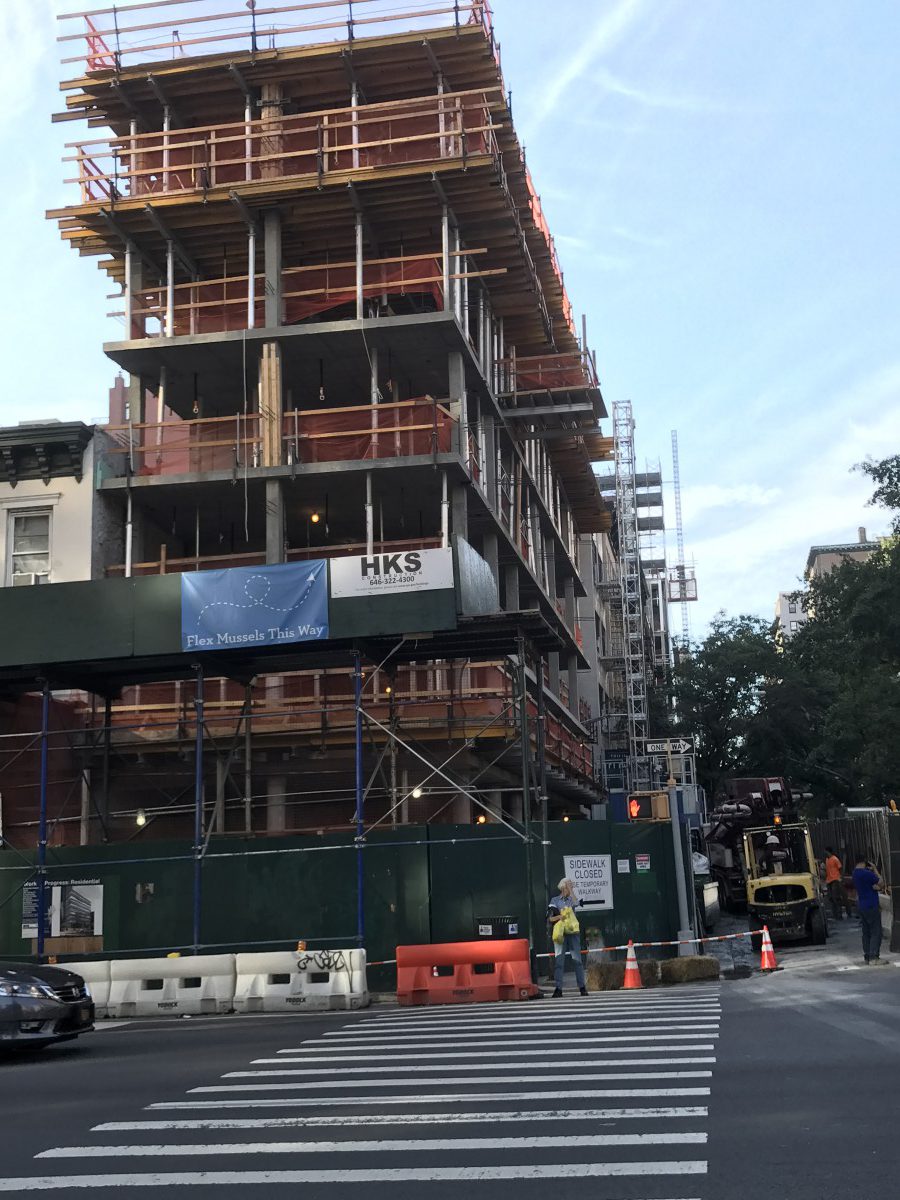
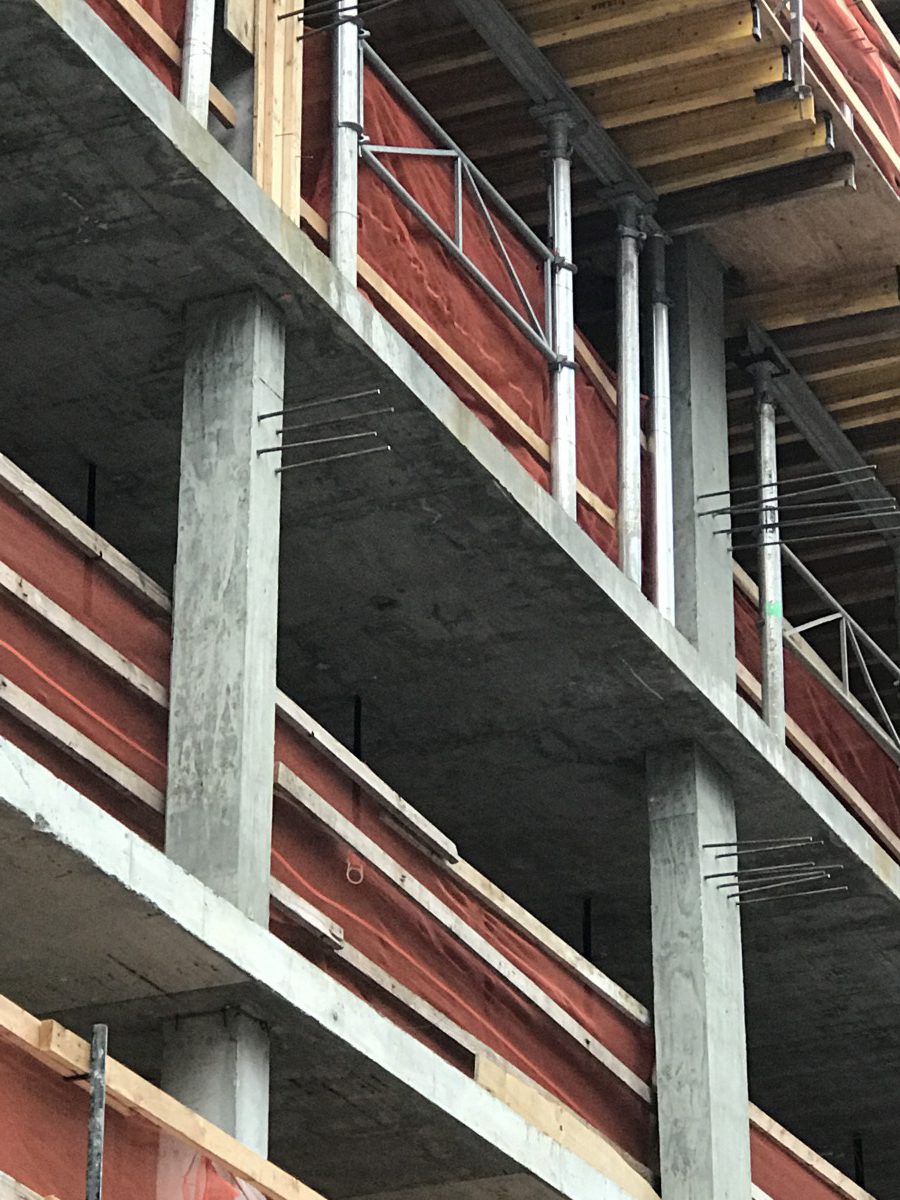
Architecture of the Moment
The default approach to the articulation of buildings at the current moment is the SHIFTED ELEVATION, where the transparent bays of a curtain wall or apertures in a solid wall jump left or right, change proportion, group and ungroup. This shifting seeks to obscure the structural grid that organizes buildings into rational and efficient bays. The SHIFTED ELEVATION seeks to generate texture and complexity through a superficial treatment.
The systems of shifting are not all equal, with some subtly playing with a readable module. Others seems more random and chaotic. The SHIFTED ELEVATION is a further sign of the continued diminishing of architectural order and its integration with space, structure, and tectonic articulation. Instead the SHIFTED ELEVATION reinforces the primacy of the decorated shed, with its gratuitous complexity and focus on the marketing gimmick. The overly frenzied and unsettled spirit of this current architecture unfortunately reflects our current moment more than we would wish.
Window Wall Installation on Jay Street
Above we see the initial installation of the window wall on this new residential building in Brooklyn. This view shows the base of the building, which has a more transparent envelop than the main tower of the building. The window wall installs between the slabs. The subsequent levels of window wall include an insulated slab edge cover.
In the view below we see the installation progressing. A track is visible that is installed to the underside of the upper slab to secure the top of each floor’s window wall. The lower edge of the window wall locks into the previously installed units on the floor below.
Sculptural Curtain Wall in DUMBO
This curtain wall is a retro fit onto an existing building with an exterior masonry wall on the other facades. This facade faces north onto the East River with views of the Manhattan skyline across the river.
The primary structure of the existing building is steel, but the installation of this curtain wall requires extensive modification, including new concrete piers and welded steel plates set at angles to the line of the building frame. This view also shows one worked sawing the existing steel in preparation for the new anchoring system.


